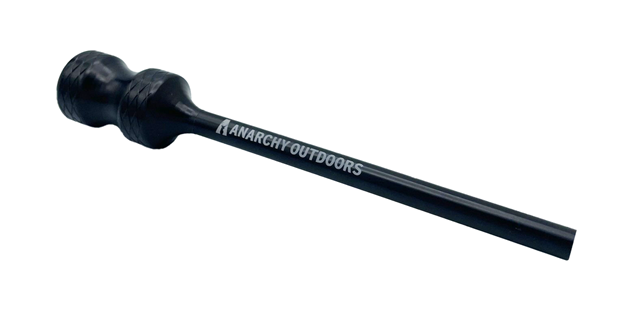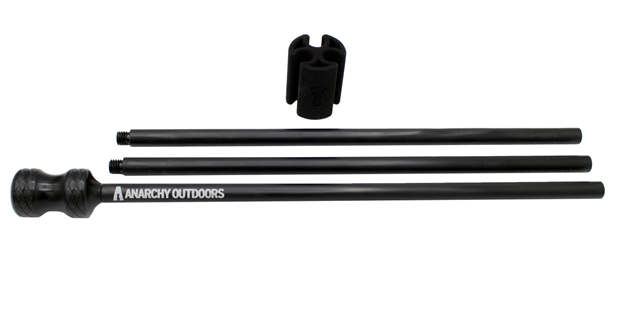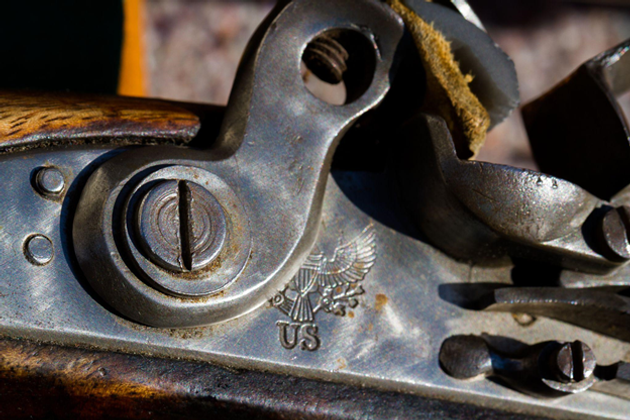How Not to Break (Or Otherwise Damage) Your Muzzleloader Ramrod
Jun 30th 2025
You can’t load a frontstuffer without a muzzleloader ramrod. That’s just how it is. However, traditional sidelock shooters are often using wooden ramrods because they have an aversion to technological progress.
Making matters nearly as bad but not necessarily worse, even the in-line shooters largely use fiberglass ramrods because they are better than wood.
They’re not the best, though, and even these break. So with that said, how can you not break, or otherwise damage, your muzzleloader ramrod?
Here are some top tips to that end.
Stop Using It As a Muzzleloader Bullet Starter

There’s a reason we have both muzzleloader ramrods and muzzleloader bullet starters. Because these do, and are intended to do, different things.
It’s in the name: muzzleloader bullet starter. The job of a bullet or ball starter is just, and only, that. To get the ball or bullet started at the muzzle and down the first few inches of the bore, using an appropriate jag and suitable handling.
Using your muzzleloader ramrod as a bullet starter is a near guaranteed way to break the thing. It does mean you need to carry another piece of gear, but you got into muzzleloading, so square with it. You had the choice to shoot a centerfire and you went this route. The extra gear comes with the territory.
On a similar note, you’ll want to upgrade your muzzleloader bullet starter too. Traditional models are made from wood and these, like ramrods, can and do also break. The issue is not as pronounced as it is with ramrods because there’s less stress on a starter than a ramrod, but there are better alternatives.
Namely, the synthetic muzzleloader bullet starters we sell here are better than their traditional wooden counterparts, and also much less likely to break. Get one of these. They’re only a few dollars and will easily outlast anything traditional, even if the aesthetic and feel are inferior.
Stop Grabbing It So Far Above the Muzzle; Limit Stroke Length
If you get nothing else out of this article, at least lend an ear to this one section. It is by far the most important piece of information in the entire article.
No muzzleloader ramrod is utterly foolproof. You can damage, if not break, any ramrod if you try hard enough. The key to not breaking your ramrod is to limit stroke length. That is, don’t try to force the ramrod down the bore any more than a few inches at a time.
As a general rule, you want to keep your strokes to 6 inches, if not shorter. Ultimately, the shorter the better, and if you can ram that bullet home with 4 inch strokes, you may as well. It’ll take a half-second longer, but who cares? Again, you got into muzzleloading and this comes with the territory.
Also, just as important as limiting stroke length is that you handle the ramrod appropriately. Do not grab it more than a few inches above the muzzle. If you slip and impart sideways pressure on the ramrod, you are almost certainly going to break, if not bend it, and the damage is effectively the same.
Removing a broken, stuck ramrod is not fun, and while it is a good skill to have, it is not an enjoyable one to cultivate. All the better for you if you never have to experience it.
Anyway, make sure you keep your grip on the ramrod as close to the muzzle as possible so there’s less of a chance that you’ll slip and snap the rod.
Ditch the Wood and Fiberglass
Most traditional muzzleloader ramrods are made of wood. Some modern alternatives, which are not only stronger but also more flexible, are made of fiberglass.
Though fiberglass is, of course, much better, neither one is optimal. It should go without saying that it’s painfully easy to break a wooden ramrod, and the truth is that fiberglass, though stronger in its own right, can still be broken. Although, to be fair, you would have to do something egregious to break it.
Nonetheless, it can happen, and a broken ramrod is once again something you’re none the worse for wishing not to experience. Avoid it if you can by getting a better ramrod - either a single-piece aluminum one, or even better, a multi-piece aluminum one like one of the ones we sell.
The multi-piece ramrods are effectively as strong as their single-piece counterparts, but they’re more convenient to carry because they can be broken down and stashed in a possibles bag. They can also be kept as a redundant backup should your main ramrod fail.
Make Sure Multi-Piece Muzzleloader Ramrods Are Fully Connected

One more thing: if you do get a muzzleloader ramrod that’s a multi-piece or collapsible model, like one of ours, make sure it is properly connected before you attempt to use it.
Our multi-piece aluminum muzzleloader ramrods are made of several sections that are threaded and intended to be screwed together. Attempting to force a ball or bullet home with a loose section is almost guaranteed to damage the threads.
Be absolutely certain that all sections are perfectly tight before you ram a ball home, or before you use the ramrod for cleaning purposes, for that matter. If you put pressure on the threads when the ramrod is loose, you stand a good chance of stripping them.
Otherwise, assuming you use it as intended, it will last you for many years and by comparison to other traditional ramrods will prove virtually indestructible.
Shop Muzzleloader Ramrods and Other Muzzleloader Accessories Here
Whether you’re here for a muzzleloader ramrod or are looking for some other muzzleloader accessories, shop our collections to find what you need. We carry muzzleloader speed loaders, bullet starters, primer containers, muzzle brakes, and a whole bunch of other accessories and parts, including muzzleloader stocks.
Take a look through our collection of parts and accessories and if you have any questions about utility or compatibility, get in touch with us before you buy.









